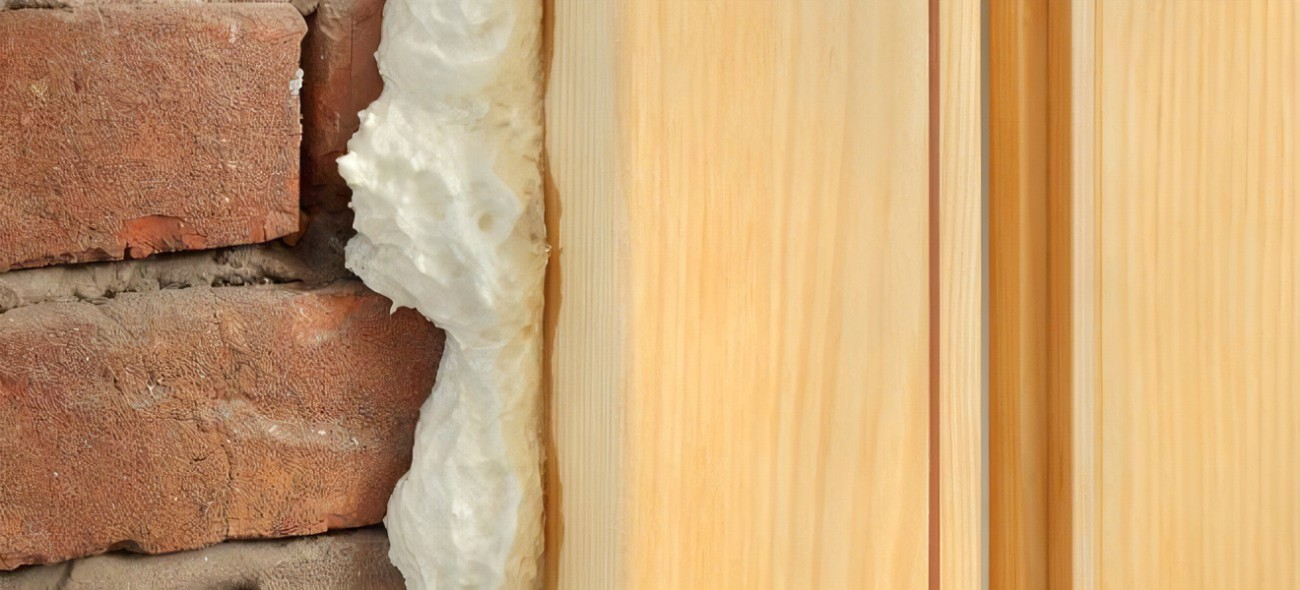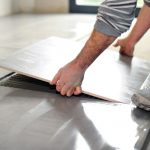Gluing wood to brick can be a tricky task, but with the right tools and techniques, it is possible to create a strong bond between the two materials.
Whether you are trying to attach a wooden shelf to a brick wall or secure a wooden post to a brick foundation, gluing wood to brick requires careful preparation and attention to detail.
In this article, we will discuss the best methods for gluing wood to brick, what types of glue work best, and how to ensure a secure bond between the two materials.
With these tips in hand, you will be able to confidently complete your project and achieve a strong bond between wood and brick.
Types Of Glue For Wood to Brick
Contents
- 1 Types Of Glue For Wood to Brick
- 2 Preparing Surface for Gluing Wood to Brick
- 3 Choosing Right Glue for Gluing Wood to Brick
- 4 Applying Glue for Gluing Wood to Brick
- 5 Clamping Wood to Brick
- 6 Drying Time for Gluing Wood to Brick
- 7 Finishing Touches After Gluing Wood To Brick
- 8 Advantages and Disadvantages Of Glue Wood To Brick
- 9 Tips For Successful Glue Wood To Brick Bonding
- 10 Troubleshooting Common Issues When Gluing Wood To Brick
- 11 Conclusion
This is a process of bonding two different materials together, wood and brick.
The most common types of glue used for this purpose are epoxy, polyurethane, and masonry adhesive. It is important to understand the characteristics of both materials before selecting the right type of glue for the job.
The strength of the bond will depend on the type of glue used and the quality of the materials being joined together. Additionally, proper preparation is essential for a successful bond.
Preparing Surface for Gluing Wood to Brick
The surfaces of both the wood and brick must be prepped before gluing.
This includes sanding down any rough edges or surfaces, removing any dirt or debris, and ensuring that there are no gaps between the two materials. If there are any gaps, they should be filled with suitable filler material, such as caulk or putty.
Once the surfaces are prepped, they should be wiped down with a damp cloth to remove any remaining dust or debris.
Choosing Right Glue for Gluing Wood to Brick
Once the surfaces have been prepped, it is important to select the right type of glue for gluing wood to brick.
Epoxy is one of the most popular choices as it provides a strong bond and is relatively easy to use. Polyurethane and masonry adhesives are also good options but may require more preparation before use.
It is important to read all instructions carefully before applying any type of adhesive so that it can be applied correctly for a successful bond.
Applying Glue for Gluing Wood to Brick
Once the right type of glue has been selected, it must be applied properly for it to form a strong bond between the wood and brick surfaces.
This involves spreading an even layer of glue on both surfaces using either a brush or roller, depending on which type of adhesive has been chosen.
It is important to ensure that all areas are covered with an even layer of glue for it to form a strong bond once it dries.
Clamping Wood to Brick
For the bond between wood and brick surfaces to be successful, it is important to clamp them together while the glue dries.
This helps ensure that all areas are held firmly in place while the adhesive sets and cures properly.
Clamps should be placed at regular intervals around the edges of both materials to hold them securely together while drying takes place.
Drying Time for Gluing Wood to Brick
Once all areas have been clamped together, it is important to allow adequate time for drying before attempting to move or use them again.
Different types of glue will require different drying times, so it is important to read all instructions carefully to determine how long each type needs to set properly.
Generally speaking, most glues will require at least 24 hours of curing time before they can be used again without risk of damage or failure due to improper curing time.
Finishing Touches After Gluing Wood To Brick
Once all areas have been clamped together and allowed adequate time for drying, some finishing touches may need to be made for everything to look neat once complete.
This may include sanding down any rough edges or filling in any gaps with caulk or putty, if necessary.
Once all finishing touches have been made, it is important to allow everything ample time to cure before attempting any further work on them, such as painting or staining them if desired.
Advantages and Disadvantages Of Glue Wood To Brick
Gluing wood to brick has many advantages, such as providing a strong bond between two different materials that would otherwise not adhere easily.
However, there are also some disadvantages associated with this method, such as difficulty achieving an even spread when applying adhesive and potential damage caused by clamping too tightly during drying time.
It is therefore important that all instructions are followed carefully to achieve successful results when using this method of joining two materials together.
Tips For Successful Glue Wood To Brick Bonding
Having to repair a damaged brick wall is stressful enough as it is, but imagine if you’re dealing with faulty or cracked bricks on your house’s exterior, too.
While brick bonding is a tricky process, there are some simple tricks to getting it right the first time, so you can have a beautiful exterior that’s protected from water damage.
Prepare the surface
When it comes to repairing brick walls, preparation is key. Before applying the mortar or adhesive, you’ll need to scrape away any loose bricks or debris to allow room for the new bricks to rest snugly against the old ones.
Choose the right adhesive
There are many different adhesives on the market, many of which specialize in repairing bricks.
However, you’ll want to choose a brick adhesive that’s suitable for outdoor use and is durable enough to withstand the weather.
Apply the adhesive
Once you’ve selected an adhesive that’s suitable for your brick surface, it’s time to apply it! Be sure to follow the manufacturer’s instructions for the best results.
For best results, apply a thin coat of the adhesive to your brick surface and then allow it to dry for 15 to 30 minutes before applying a second coat. Allow the adhesive to dry overnight for best results.
Replace the bricks
After you’ve applied the adhesive and allowed it to dry overnight, it’s time to replace the bricks. While brick bonding is a delicate process, you can still get the job done in half the time with the proper tools and materials.
Level the bricks
After you’ve replaced the bricks that have cracked or broken on your exterior wall, you’ll need to level them to ensure an even appearance.
To level the bricks on your exterior wall, you’ll need to use a leveler tool or a straight edge.
Troubleshooting Common Issues When Gluing Wood To Brick
Gluing wood to brick is a challenging task that requires a few extra steps to ensure a successful bond.
First, you must make sure the surface of the brick is clean and free of dirt, dust, and debris. You can use a stiff brush or an abrasive pad to scrub the brick and remove any loose material.
Next, you must roughen the surface of the brick with sandpaper or an abrasive pad so that the glue will have something to grip onto. Finally, use an appropriate adhesive for gluing wood to brick, such as epoxy or construction adhesive.
Make sure to follow the instructions on the adhesive package for proper application and curing time. If done correctly, your wood should be securely bonded to the brick.
Troubleshooting common issues when gluing wood to brick can be tricky, but with a little patience and attention to detail, you can achieve a strong bond that will last for years.
Conclusion
Gluing wood to brick can be a great way to add a decorative touch to your home.
It’s important to choose the right type of glue for the job, as some glues are better suited for certain types of materials than others.
Once you’ve chosen the appropriate glue, you’ll need to prepare both surfaces by cleaning them and roughening them up with sandpaper or a wire brush.
Next, apply the glue to both surfaces and press them together firmly. Allow the glue to dry completely before using the attached materials.
With a little bit of preparation and patience, you can successfully attach wood to brick and create a beautiful addition to your home.






